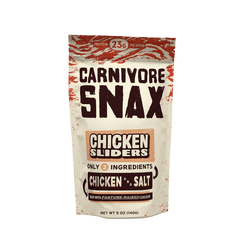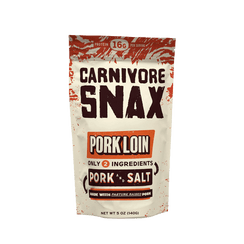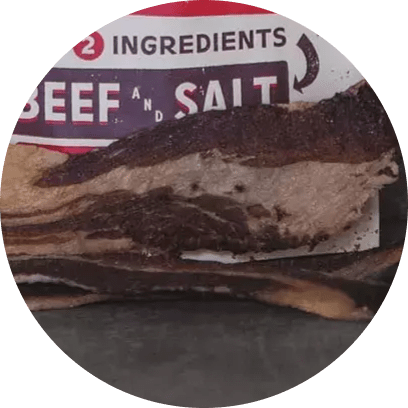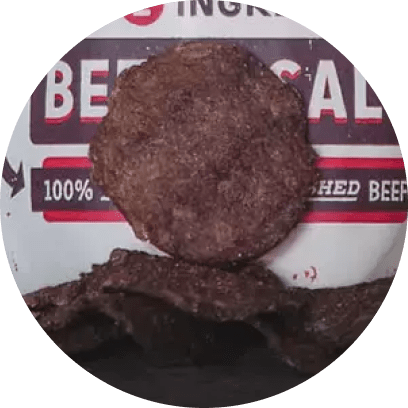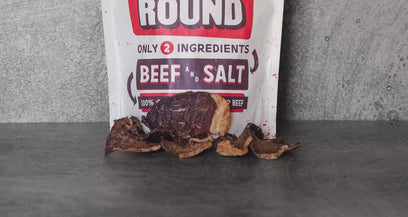THE CARNIVORE DIET BENEFITS




Our global food system has long been dominated by methods that prioritize volume and speed. And at first, this was out of necessity - to feed an evergrowing population. These days, though, the focus is on profits over anything else.
Modern farming practices come with significant drawbacks, from harming our environment to compromising the well-being of our farmers. Consumers suffer from a lower quality product, too. And we haven't even mentioned the implications of our reliance on such an unsustainable food supply chain.
But there's an alternative on the horizon: regenerative agriculture. Instead of merely taking from the land, this approach seeks to replenish and rejuvenate it. As populations continue to grow, a pressing question arises: can regenerative agriculture feed the world?
Let's delve deep into this pivotal shift in agriculture and explore its true potential. First, we need to highlight the current problematic state of our food supply system.
The Problems With Modern Agriculture and Our Food Supply System
We recently wrote a detailed guide breaking down the differences between regenerative agriculture vs conventional agriculture, which highlights the shortcomings of modern agriculture in-depth. We’ll summarize the main problems for you below.
The Shortcomings of Intensive Farming Practices
Modern, industrial-scale farming, prevalent in many parts of the world, prioritizes large-scale production, often at the expense of sustainability. This approach, marked by vast monocultures, heavy machinery usage, and dependency on synthetic inputs, introduces a range of challenges:
- Soil Degradation: Intensive farming diminishes soil health. Continuously growing the same crops depletes essential nutrients, leading to dependency on chemical fertilizers to maintain yields.
- Over-reliance on Water: Such farming practices consume substantial water resources, sometimes exacerbating drought conditions in already water-scarce areas.
- Health Concerns: Regular use of pesticides risks leaving residues in our food, with long-term consumption effects still under active research.
The Broader Impact on Our Environment
Beyond the immediate farm boundaries, modern agricultural practices exert considerable strain on our larger ecosystems:
- Compromised Water Systems: Pesticides and fertilizers don't just stay on the fields. Runoff can contaminate local waterways, endangering aquatic life and human health.
- Biodiversity Crisis: The prevalence of monocultures means fewer varieties of plants and animals, making ecosystems vulnerable and reducing habitats for wildlife.
- Economic and Social Ramifications: As small farms struggle to compete with large-scale operations, rural communities often face economic hardships. Dependency on chemicals can also place financial strain on farmers, pushing many into cycles of debt.
The good news, though, is that a revolution is in the midst of forming right now as we speak…
Introducing Regenerative Agriculture…
The soil beneath our feet is far more than just dirt - it's a living, breathing entity teeming with life, full of microscopic organisms, and ripe with potential.
As modern agricultural methods strain the limits of our soil, water, and ecosystems, a growing number of advocates and experts are turning their gaze back toward more holistic, sustainable practices.
Enter regenerative agriculture, an approach that's as much about going back to our roots as it is about looking ahead to the future. What is regenerative agriculture, you ask? Let’s take a look at the history of regenerative agriculture to find out.
A Brief History: From Ancient Practices to Modern Application
For millennia, indigenous cultures and ancient civilizations instinctively understood the land's cyclical nature. From the terraced farms of the Andes to the shifting cultivation techniques in parts of Africa and Asia, many cultures recognized the need to work with nature, not against it.
In the 20th century, as industrial agriculture gained prominence, much of this ancestral wisdom was overlooked in favor of short-term gains.
But with the increasing challenges of soil degradation, water scarcity, and other environmental concerns, the past few decades have witnessed a resurgence of these time-honored methods.
Regenerative agriculture is not a new invention but rather a rekindling of practices that prioritize long-term ecosystem health over immediate output. How does regenerative agriculture work, though?
The Core Principles of Regenerative Farming
We have a thorough breakdown of the regenerative farming techniques in our blog if you want the full scoop - but here are the key takeaways:
- Soil Health: One of the foundational tenets of regenerative agriculture is prioritizing soil health. It recognizes that healthy soil isn’t just fertile, but teeming with life. By enhancing the organic content and microbial diversity of the soil, we can boost crop yields without synthetic inputs and make the land more resilient to droughts and pests.
- Diversity: Instead of vast fields of single crops, regenerative farms are diverse ecosystems. A mix of plants and sometimes animals live symbiotically, aiding in pest control, nutrient cycling, and more. Learn more in our guide to regenerative agriculture biodiversity.
- Water Management: Regenerative agriculture practices often emphasize water retention techniques, minimizing runoff and maximizing the utility of every drop. Through methods like contour farming and agroecology, water is conserved and used efficiently. Discover the full implications of the water benefits of regenerative agriculture in our blog.
- Animal Integration: When practiced, rotational grazing can regenerate pasture lands, reduce erosion, and even sequester carbon. Animals like cattle play a key role in nutrient cycling, aiding in the breakdown of organic matter and replenishing the soil. We offer more context in our guide to regenerative agriculture carbon sequestration.
- Continuous Ground Cover: Bare soil is vulnerable to erosion. Mulching or cover cropping for regenerative farming protects the soil, retains moisture, and prevents weed growth.
As we mentioned, we have a more detailed overview of the pros and cons of regenerative agriculture in our blog if you’re interested. But, why is regenerative agriculture important? Can regenerative agriculture feed the world? Let’s find out together.
Can Regenerative Agriculture Feed the World?
So, can regenerative agriculture feed the world? Those who critique this style of farming claim it is too expensive or can’t be scaled to the heights our world needs to be solely reliant on it. But, as you’ll discover below, these critiques are more fiction than fact…
The Myth of Yield: Quality Over Quantity
Modern agriculture has been obsessed with yield, often at the expense of nutrition and environmental health. But what benefit is a high yield if the food produced lacks essential nutrients or harms the environment?
Regenerative agriculture shifts this narrative. Instead of pushing land to its limits to squeeze out every possible crop, regenerative methods focus on nurturing soil health, which in turn, produces crops with higher nutritional value.
Studies have shown that crops grown on regeneratively farmed lands often possess higher levels of vitamins and minerals, making them not just more nutritious, but also more flavorful.
Moreover, while the initial yields from regenerative farms might sometimes be slightly lower than their industrial counterparts, the long-term view reveals a different story.
Industrial farming methods tend to degrade soil quality over time, leading to decreasing yields without intervention, whereas regenerative farms can maintain or even increase yields over time as the soil health improves.
There’s an old saying that you catch more flies with honey than vinegar - and it fits nicely in the context of regenerative farming. By working with the land rather than against it, yields don’t just match up with conventional farming - they may be able to exceed them!
Ensuring Nutritional Security Through Diversity
One of the most alarming discoveries is how few companies control our nation’s entire food supply chain. Our current food supply chain lacks diversity, which exposes us to serious risk of food shortage.
A single pest or disease can wipe out an entire crop variety, leading to food shortages and economic hardship. Regenerative agriculture promotes biodiversity, ensuring that farms are resilient against such challenges.
Diverse farms not only protect against crop failure but also produce a variety of foods that ensure nutritional security.
Traditional farming often focuses on staple crops, but regenerative farming recognizes the importance of a diversified diet, cultivating everything from grains and vegetables to fruits and legumes, ensuring communities receive a balanced diet.
Regenerative Agriculture’s Role in Resilience and Sustainability
Our planet is facing unprecedented challenges. From erratic weather patterns to decreasing freshwater resources, the need for resilience in our food systems has never been greater. Regenerative agriculture is a beacon in this scenario.
By building healthy soils, these practices act as a buffer against drought, as richer soils retain more water. Furthermore, by avoiding synthetic inputs, regenerative farms protect local waterways, ensuring freshwater supplies remain uncontaminated.
Beyond just resilience, regenerative agriculture aims for sustainability. It's not about exploiting resources for short-term gains but nurturing them for future generations.
By revitalizing local ecosystems, promoting biodiversity, and using nature-based solutions, regenerative agriculture doesn't just aim to feed the world today but ensures we leave behind a world capable of feeding itself tomorrow.
So, can regenerative agriculture feed the world? We believe it can. Moreover, we believe it must. It’s better for the lands we farm, it’s better for the farmers toiling in the fields, and as you’ll discover below, it’s better for you, too.
The Positive Impact on Consumer Health and Wellness
Whether you’re on the carnivore diet vs keto diet, paleo diet, eating a high protein diet, or just looking to live a healthier lifestyle while making more ethical choices - you can follow a regenerative agriculture diet.
Doing so will not only allow you to feel good knowing you’re making a difference - you’ll be eating healthier, tastier food too!
Nutritional Superiority of Regeneratively Grown Produce
By prioritizing soil health and promoting practices like crop rotation, cover cropping, and natural composting, regenerative farming ensures that the soil is teeming with life and essential nutrients.
So, what does this mean for the food grown on such land?
Quite simply, healthier soil translates to healthier plants. Produce from regeneratively farmed lands has been found to be richer in vital minerals and vitamins.
For example, organically grown tomatoes may contain higher levels of Vitamin C and beneficial phytonutrients compared to conventionally grown ones. This is a significant edge in nutrient density, making every bite more beneficial for our bodies.
The Added Value of Chemical-Free Farming
It’s not just about what you’re getting with regenerative farming, though - it’s also about what you're avoiding. We’re talking about the chemicals associated with conventional farming tactics.
One of the major concerns with modern, intensive farming is the liberal use of synthetic chemicals - herbicides, pesticides, and fertilizers. While they might boost yields in the short term, the long-term health implications for consumers are worrisome.
Regenerative agriculture eschews these synthetic inputs. By cultivating a balanced ecosystem where pests and predators keep each other in check and where the soil is naturally fertile, there's a reduced dependency on chemicals.
Sure, there is regenerative agriculture fertilizer used - but it’s typically derived directly form the land, not from a chemical lab. The direct advantage for consumers? They can savor their food, knowing that it's free from potentially harmful residues.
Furthermore, by eliminating these chemicals, we also reduce the risk of associated diseases and health issues in the long run.
What Can YOU Do to Shift the Food Supply Chain Towards Regenerative Practices?
You can learn how to support regenerative agriculture in our blog to do your part to shift our food supply chain in the right direction. Here’s what you can do today.
The Power of Consumer Choice: Voting With Your Wallet
You're essentially casting a vote every time you make a purchase. By consciously choosing products from regenerative farms, you're signaling to the market that there's a demand for sustainable and ethically produced goods.
Over time, as more consumers make similar choices, businesses will notice and adapt. You have the power to drive change right from your shopping cart.
Supporting Local Farmers and Regenerative Initiatives
Local farmers' markets are often treasure troves of sustainably produced goods. By buying directly from these farmers, you're not only getting fresh, nutritious produce but also supporting small-scale operations that often employ regenerative techniques.
Additionally, consider participating in Community Supported Agriculture (CSA) programs. These initiatives allow consumers to “subscribe” to the yields of local farms, ensuring you get a steady supply of sustainably produced goods while directly supporting regenerative practices.
Educate and Spread the Word: Become an Advocate
Knowledge is power, and in today's digital age, sharing knowledge is easier than ever. As you learn more about regenerative agriculture and its myriad benefits, share this information with your circle.
You can also organize or attend local workshops and seminars on sustainable farming, and create a community that's informed and passionate about making a difference.
Advocate for the Future of Farming By Shopping at Carnivore Snax!
Our Carnivore Chips are sourced from the most elite, ethical regenerative farms in the country. But it’s not just about doing the right thing - it’s about spoiling yourself with scrumptious, melt-in-your-mouth meat chips that nourish your body.
They’ve been referred to as meat pastries, and we’ll let you find out why by trying them yourself. Whether you go with our ribeye chips, steak chips, lamb chips, beef chips, brisket chips, chicken chips, or pork chips, we’re confident you won’t be disappointed!
Final Thoughts on Feeding the World With Regenerative Agriculture
In summary, can regenerative agriculture feed the world? We think so - and to be clear, we think it’s the only way forward in looking at the dire state of modern, conventional farming.
Fortunately, the collective power of informed consumer choices, combined with the undeniable benefits of regenerative practices, presents a vision of hope.
By supporting initiatives like Carnivore Snax and advocating for sustainable farming, each one of us can contribute to a healthier planet and a more resilient food supply. Together, let's sow the seeds for a future where every meal nourishes both our bodies and our lands!













